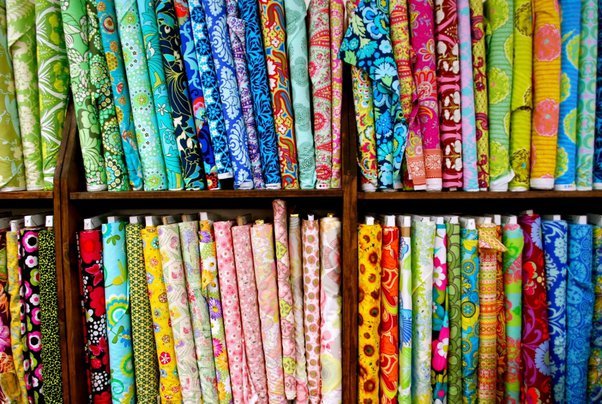
When it comes to picking the perfect fabric—whether for a new shirt, a cozy throw, or even workout gear—the debate between polyester printed fabric and cotton is one that never seems to fade. Both have their loyal fans, and for good reason. Imagine sliding into a silky-smooth polyester shirt with bold, vibrant patterns that stay bright wash after wash. Now picture a soft cotton tee that feels like a warm hug against your skin. Which one sounds more like your vibe? The truth is, there’s no single “winner”—it all boils down to what you need. Let’s dive into the strengths, quirks, and trade-offs of these two popular fabrics to help you decide which one fits your life best.
The Quick Take: It Depends on You
So, polyester printed fabric or cotton—which is better? The short answer: it depends. Polyester shines with its durability, wrinkle resistance, and ability to hold eye-popping prints, making it a go-to for sportswear or low-maintenance pieces. Cotton, on the other hand, brings unbeatable breathability and a natural softness that’s tough to resist, especially for everyday wear or hot climates.
The real question is—what matters most to you? Are you after a fabric that’s easy to care for and budget-friendly? Do you need something that wicks sweat or feels gentle on sensitive skin? Maybe you’re all about sustainability or crave prints that pop. By the end of this fabric face-off, you’ll have the clarity to choose wisely—and who knows, a cotton-poly blend might just steal the show.
Polyester Printed Fabric: The Bold and Durable Contender
Polyester has earned its spot in the fabric world for some pretty impressive reasons. First up: durability. Ever had a shirt that survived countless washes without stretching, shrinking, or looking worn out? That’s polyester doing its thing. It’s a synthetic champ that laughs in the face of wrinkles and wear, making it perfect for uniforms, kids’ clothes, or anything that needs to last.
Then there’s the print factor. Polyester’s smooth fibers are like a canvas for vibrant, crisp designs—think floral dresses or graphic tees that refuse to fade. That Hawaiian shirt you rocked on vacation? If it’s polyester, it’s probably still as bright as day one. Plus, modern polyester often comes with moisture-wicking tech, pulling sweat away to keep you dry during a run or a hike. Activewear brands love it for a reason.
But it’s not perfect. Some folks find polyester’s synthetic feel less comfy than natural fibers like cotton. And while it resists stains (a win!), it can trap heat in humid weather, leaving you feeling sticky. Cost-wise, though, it’s a steal—usually cheaper than cotton—and recycled polyester options are making it a bit greener these days.
Cotton: The Timeless Natural Classic
Cotton’s been a fabric MVP for centuries, and it’s easy to see why. Its softness is legendary—think of that favorite t-shirt that feels like a second skin. It’s breathable, too, letting air flow to keep you cool on scorching days, which makes it a staple for summer dresses or casual tees. Got sensitive skin? Cotton’s hypoallergenic nature means it’s less likely to irritate, a big plus for allergy-prone folks.
Versatility is another win. Cotton can be light and breezy for warm weather or thick and cozy for winter layers. From crisp button-ups to plush towels, it adapts like a pro. But there are downsides. Cotton wrinkles easily, shrinks if you’re not careful, and soaks up moisture—which is great for breathability but less ideal if you’re sweating buckets.
The Green Factor: Sustainability Showdown
Let’s talk environmental impact, because it’s a big deal for many of us. Cotton, as a natural fiber, is biodegradable—toss it in a landfill, and it’ll break down over time. Organic cotton takes it further, skipping pesticides and cutting water use. But conventional cotton? It’s thirsty—up to 2,700 liters of water for one t-shirt—and often leans on chemicals that can mess with ecosystems.
Polyester, a petroleum-based synthetic, doesn’t biodegrade, but it’s not all bad news. It uses less water to produce, and recycled polyester (made from plastic bottles) is gaining traction, turning trash into treasure. Plus, its durability means you might replace it less often, cutting waste. The catch? Washing it releases microplastics into waterways—a problem scientists are still tackling.
So, which is “greener”? It’s a toss-up. Organic cotton and recycled polyester are steps forward, but the most eco-friendly choice might just be the piece you’ll wear forever.
How to Choose: Your Needs, Your Call
Ready to pick a side? Here’s how to narrow it down:
- Purpose: Sportswear or outdoor gear? Polyester’s moisture-wicking and toughness win. Everyday wear or bedding? Cotton’s comfort reigns supreme.
- Comfort: Love a natural, soft feel? Cotton’s your pick. Prefer lightweight and sleek? Polyester’s got you.
- Care: Hate ironing? Polyester resists wrinkles. Don’t mind a little upkeep? Cotton’s worth it.
- Climate: Hot and humid? Cotton breathes better. Cooler weather? Polyester layers well.
- Budget & Longevity: Polyester’s cheaper upfront and durable, but a quality cotton piece can last with care.
And don’t sleep on blends—they mix cotton’s softness with polyester’s strength, often hitting that sweet spot.
The Final Word
Polyester printed fabric and cotton each bring something special to the table. Polyester dazzles with bold prints and rugged durability—perfect for that vibrant beach shirt or gym gear. Cotton offers timeless comfort and breathability, ideal for lazy days or sensitive skin. Sustainability-wise, both have pros and cons, but opting for recycled or organic versions can tip the scales.
So, which one’s for you? It’s all about what fits your life. Crave long-lasting patterns and easy care? Polyester’s your match. Lean toward natural softness and eco-vibes? Cotton’s calling. Or maybe a blend splits the difference. Whatever you choose, go for the fabric that feels like you—because the best pick is the one you’ll love wearing day after day.
